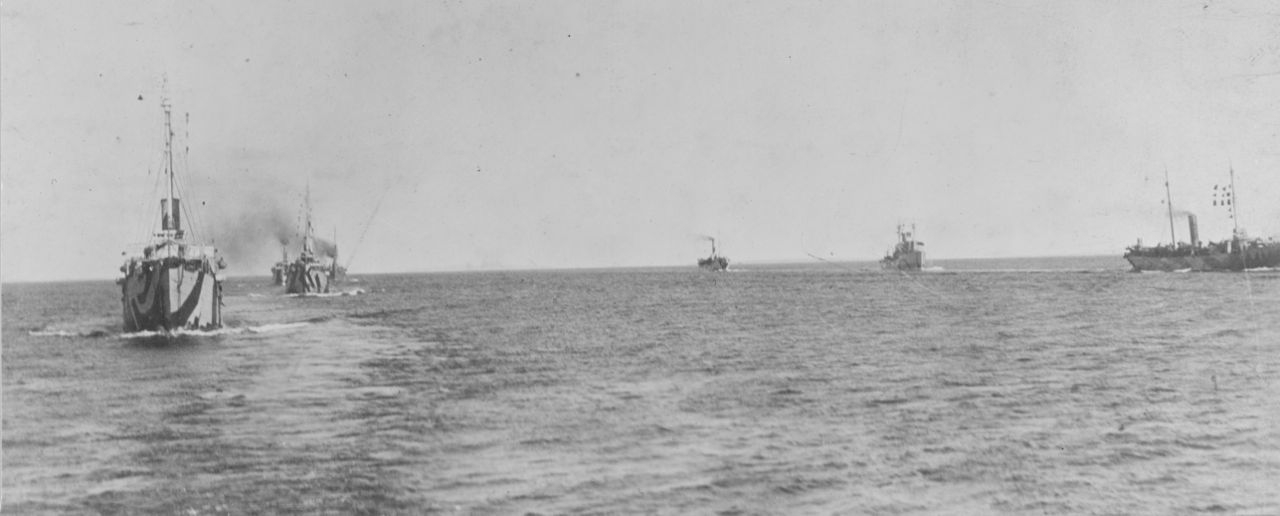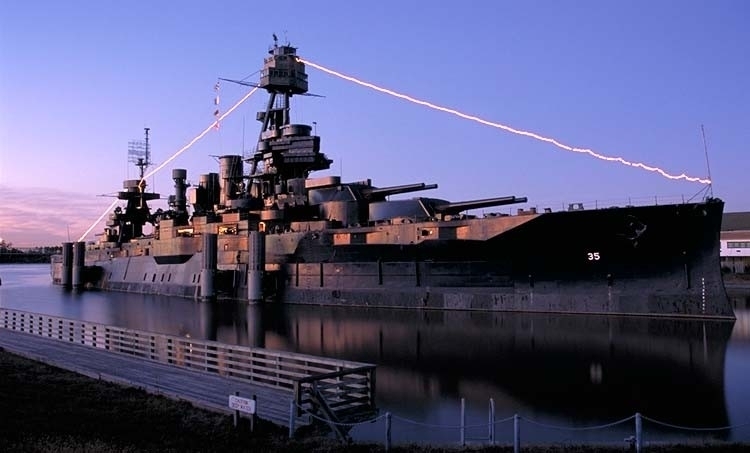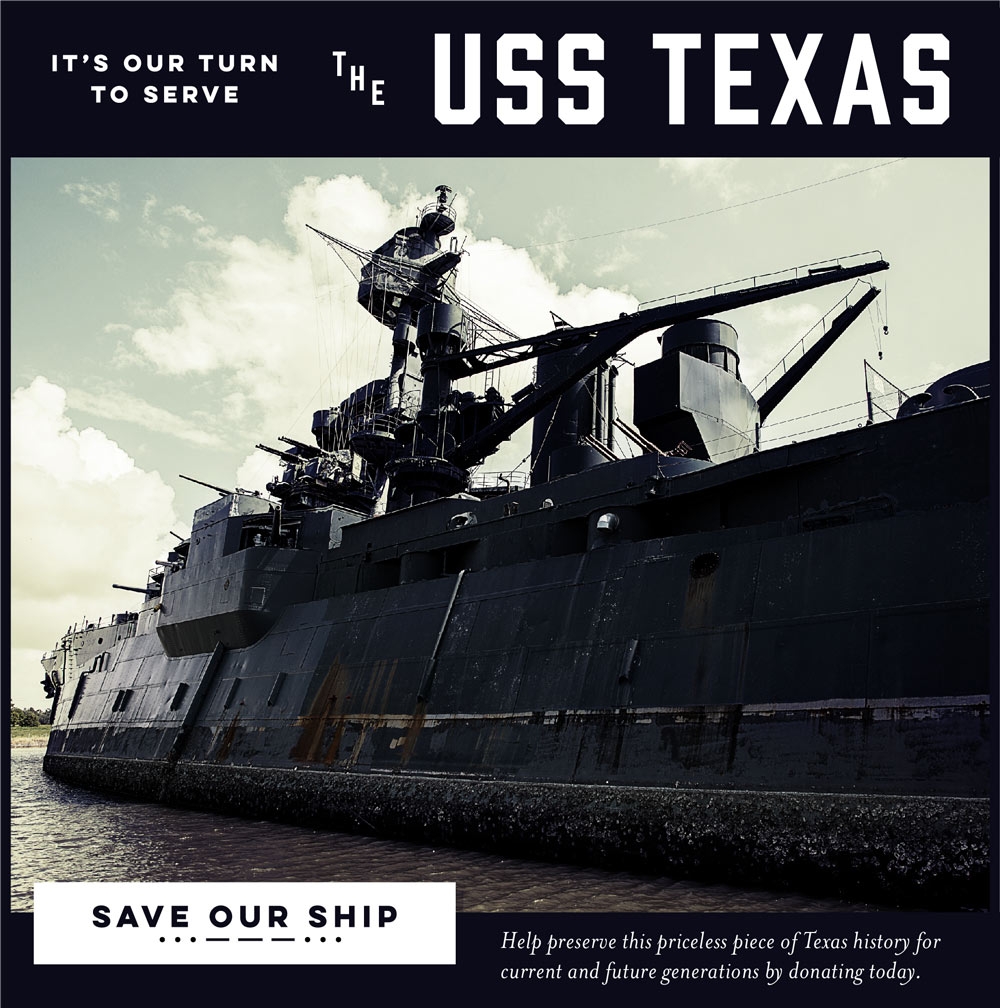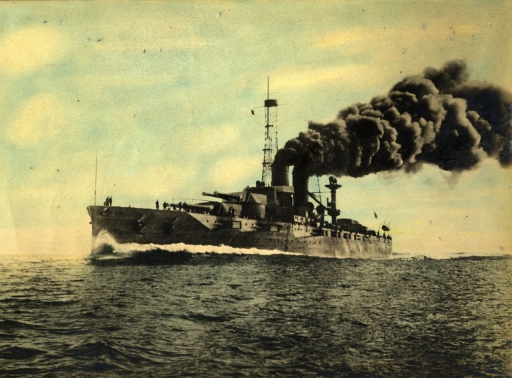A naval veteran of two world wars, the USS Texas is a battleship which has survived one or two scrapes in its time. But now, over a century on from its launch and after a long and distinguished second career as a floating museum and some-time film set, the ship is facing a fight for its survival. Its rusting hull is in urgent need of repair and campaigners are trying to persuade the State of Texas to step in to help save it from the scrapyard. Patrick Gregory has been looking at its history.
A hundred years ago, in early December 1917, the USS Texas found itself in the New York Naval Shipyard in Brooklyn. It had been there for two months following a serious mishap which had seen it run hard aground in Long Island Sound. The Texas’ captain Victor Blue and his navigator had apparently been confused by shore lights and by the location of a channel through the minefield laid at the end of the sound.
Blue managed not only to avoid court martial for the incident but also to hold on to his command of the ship. Critics put down to his friendship with Navy Secretary Josephus Daniels. Either way, the damage occasioned was enough to set back the Texas’ war service by some months; but eventually, in January 1918, the battleship sailed for British coastal waters to join up with the US force led by Rear Admiral Hugh Rodman.
U-boat threat
Over the next year, operating as part of the 6th Battle Squadron, the battleship played its part in checking the manoeuvres of the German High Seas Fleet and was part of the US-led North Sea mine barrage effort to counter the threat of enemy U-boats.

US minelayers in the North Sea in 1918 – the last year of the First World War (Photo: US Naval History & Heritage Command #111-SC-43563)
Following the Armistice, USS Texas was one of the vessels to escort the German navy when it surrendered to the British Grand Fleet at Scapa Flow in the Orkney Islands; and before returning to the United States, the Texas was also on hand to welcome Woodrow Wilson’s George Washington at Brest in France, ahead of the President’s visit to the post-war peace conference in Paris.
During the inter-war years, the Texas recorded another milestone when it became the first American battleship to launch a plane from its decks; and after an extensive modernisation in the mid-1920s enjoyed the status of the flagship of the United States fleet.
D-Day
Whilst duties in the 1930s tended to revolve increasingly around training operations, the ship would nonetheless have a busy and eventful Second World War. At anchor in Maine in December 1941 it escaped the attack on Pearl Harbor but over the next four years the Texas was thrown into everything from escort-convoy work in the Atlantic and off North Africa, to D-Day. It was one of the battleships to provide covering fire in June 1944, pounding German positions as Allied troops landed on the beaches; and more was to come in fierce fighting with German shore-based forces off Cherbourg a few weeks later. The ship was hit twice, with the second shell miraculously smashing through the bow and coming to rest without exploding.

USS Texas at its berth near Houston (Photo:Texas Parks & Wildlife Department)
The Texas’ war was completed with action at Iwo Jima and Okinawa, landing Marine divisions and providing more covering naval bombardment. By October 1945 it had returned to the United States, acting as a troopship ferrying servicemen back to Los Angeles. However, there its active combat life would end. Three years later, with a decision taken to deactivate the ship, the USS Texas was towed to its present berth at La Porte outside Houston, in its namesake state.
The ship has been a popular visitor attraction and educational tool in the years since, millions flocking to walk her decks: schoolchildren, history buffs and veterans alike. But those years have also taken their toll on the ship, climactic conditions and the effects of the permanent mooring wreaking havoc with the 100-year old steel hull. Repairs, major and minor, have been carried out in that time, including a major overhaul in dry dock in the late 1980s.
Petition
Today, in spite of all best efforts of the Texas Parks and Wildlife Department (TPWD) who administer it, the ship is fighting for its very survival. It is continually leaking and whilst the TPWD does its best to manage the water in-flow with pumps, the ship is liable to sudden new holes appearing in her hull that allow more water in than the pumps can deal with. The fragile veteran could be condemned to an ignominious end.
But an alternative solution is advocated by the ship’s preservation society. The Battleship Texas Foundation wants to see this last surviving ‘Dreadnought’ placed in a permanent dry berth, one which will safeguard the Texas for another century. Yet it is a proposal which is currently unfunded. As ever money is the issue: money and the balance of public responsibilities.

The foundation has started a petition to the Texas state government, as the ultimate arbiter, to set aside funds to save the ship. Current estimates put the costs of scrapping the Texas at around $30 million and the dry berth option at just over $50 million. The foundation says it will split the $20 million difference with the state government. It will pledge $10 million if the state will put a matching sum plus scrappage on the table – $40 million.
The foundation’s executive director Bruce Bramlett believes the decision facing the state government is an obvious one. As he told The Houston Chronicle, it has to act, and act now: “If we have to scrap the Battleship Texas, no one is just going to say ‘OK, take her away’. They’re going to want to carefully remove and catalogue the artefacts and historical property on the ship. Then those things are going to have to be stored for years. After several years have passed, people are going to say, ‘Hey, we should build a museum and put these things in there.’ But we already have a museum. It’s sitting in our ship channel right now.”
Visit Battleship Texas Foundation for more on the story of USS Texas and the petition to save the ship.
Patrick Gregory is co-author with Elizabeth Nurser of ‘An American on the Western Front: The First World War Letters of Arthur Clifford Kimber 1917-18’ (The History Press 2016 – published in the US for the April 2017 Centennial): American on the Western Front @AmericanOnTheWF.
Images: USS Texas courtesy of Texas Parks and Wildlife Department; US Naval History & Heritage Command (Minelayers – #111-SC-43563)
